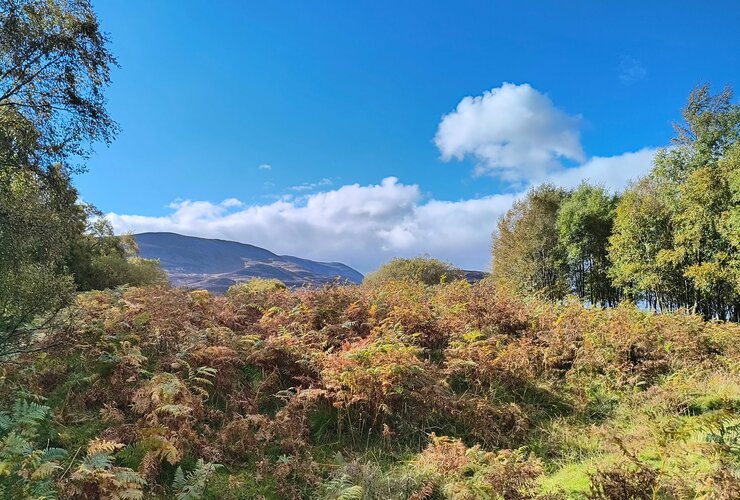Where the wild places are
Wendy Grindle and Thomas Widrow explore what we mean by ‘wild’ and how it is directing the Trust’s strategy.

To protect what we mean by wild places effectively, we need to be able to define and measure what we are talking about with a common and accessible language.
The Trust has started to address this by defining wild places as being ‘areas where natural processes are able to thrive’ and creating new contemporary measures of what characterises wild places.
Human made landscapes
Within the UK we protect our landscapes through a series of local, national and international designations. We tend to favour a system that protects ‘features’ that are the product of an interaction between humans and the biophysical environment; in essence, it celebrates a human-made landscape.
The discussion on conservation philosophy that took place between John Muir, founding father of US National Parks, and Gifford Pinchot, founding father of the US Forest Service, in the late 19th Century resonates today.
Pinchot’s views are recorded as representing a utilitarian approach to conservation that reflected humanity’s overt management of the environment. That approach seems to fit with the UK’s current designation system. On the other hand, Muir’s philosophy represents the desire to secure landscapes for nature and their natural beauty.
In advocating for wild places Muir led with two key arguments: one was their inherent experiential value and the other that “they provide pristine environments that enable measurement of external human influence by means of comparison with other areas”.
The challenge facing the Trust is whether UK society sees value in restoring and protecting some areas of land “for nature and its natural beauty” – how much land, and where, depends on wider society.
Our strategy is designed to address that challenge, first by explaining the issues, and then asking that question of a wider audience.
Vital for all
The Trust today believes that wild places are vital for two reasons similar to those advanced by Muir:
- they provide a window enabling us to see what nature is doing as it evolves and adapts
- they make us feel something special – wildness – the idea that humans are one filament in a web of life, dependent on the integrity of the whole of the web, and vulnerable if not living in harmony with it.
Experiencing that feeling is essential to our wellbeing – grounding us in the wider world and creating the strongest bonds with nature. This in turn prompts us to look after and give back to wild places and protect and defend them when needed.
Wild place attributes
The Trust has established that wild places have ‘attributes’ associated with sight, sound, remoteness, ecology and presence or absence of human intervention.
These attributes can be plotted on a scale to measure the physical and ecological attributes that make up a landscape and record changes over time. Once developed fully, the Trust’s wild attributes scale will be piloted on the land which is in our care.
However, wild places are not only defined by their physical characteristics; they also affect humans deeply on an emotional level. This is why the Trust is developing a second tool that focuses on perceptions within society and their inter-generational change. Currently at an early stage of development, it might be based on responses to the Wild Places Survey conducted in 2023 and will measure the perceptual and experiential elements of a wild place.
Wild place register
Together, the wild attributes and this second tool will enable the Trust to populate a wild place register and monitor the state of wild places across the UK over the years.
The register will provide landowners with a clear understanding of what actions they can take to improve the wild attributes of the land in their care. It will also give the wider public the knowledge required to read the landscape themselves and understand what makes a place wild.
And finally, it will provide decision- makers with evidence which the Trust and its partners across the environmental movement will be able to use to push for policies and legislation that benefit and protect wild places.
This exciting new work is at an early stage and will form the core of our activity over the next few years.
About the authors
Wendy Grindle is the Trust's Director of Communications, Engagement and Marketing. Thomas Widrow is the Trust's Head of Campaigns.
- This article first appeared in the Autumn 2024 edition of the John Muir Trust Members' Journal. If you would like to receive our Journal twice a year please consider joining the Trust as a Member.
Photograph at the top shows Schiehallion from the Braes of Foss woodland by Tom Corke.


